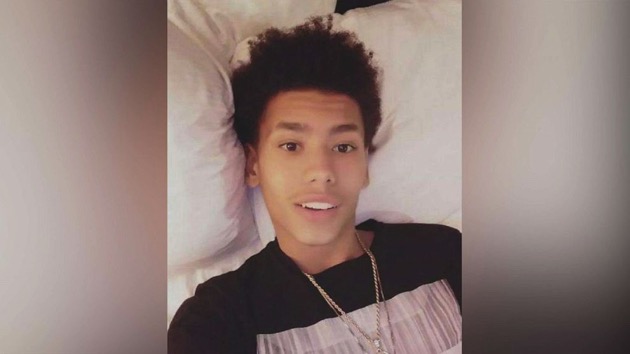
(ALBANY, N.Y.) — With mounting concerns over the potential threat of the newly discovered omicron variant, U.S. scientists are racing to try to determine whether there are any confirmed cases of the new variant circulating around the country.
Among those is the New York State Department of Health’s Wadsworth Center Labs in Albany, New York, where for months, scientists have been on the lookout for dangerous variants, while monitoring the genetic changes in the COVID-19 virus.
In order to track new variants, the team sequences the virus’s genetic material to identify its lineage, strain and mutations, as well as to see how the virus is evolving, and which viruses are entering the state of New York.
The lab has been on high alert since the discovery of the omicron variant, analyzing positive COVID-19 samples from across the state to see if the variant is already present within the community.
On Wednesday, scientists in California confirmed the first known case of omicron in the U.S.
It is “absolutely, entirely possible,” that the omicron variant is already circulating in many other communities across the country, Dr. Kirsten St. George, director of virology and chief of the Laboratory of Viral Diseases at the Wadsworth Center, told ABC News on Tuesday.
“We only sequence a subset of samples in New York and elsewhere in the country. We’re not sequencing 100% of positive specimens. It is entirely possible that it is already here, and we have yet to sequence the specimen that it’s in,” St. George said on Tuesday, prior to the news of the U.S.’ first confirmed case.
St. George said she was taken aback when she first saw a 3D image, shared by South Africa, of omicron’s mutations.
“You could see the individual mutations marked on that protein, and it was really pretty jaw dropping, because it had so many more mutations than anything we’ve ever seen. It was a fairly startling thing to look at,” St. George said, adding that “the evolutionary change on that protein was more extensive than anything we had seen.”
Omicron is concerning because it has mutations not seen before, and scientists still do not know how it will clinically affect those it infects, St. George said, adding that “there are mutations that we unfortunately know can be associated with reduced efficacy of immunity.”
The lab has been sequencing over 800 COVID-19 samples per week, researchers explained, a number that has been greatly enhanced with the establishment of a sequencing consortium, which comprises four other sequencing laboratories around the state, and also by collaboration with other labs across the state.
“These are known positive COVID samples that have been collected from throughout New York state and they’re sent to us and we’re preparing them for whole genome sequencing,” Alexis Russell, a research scientist for the lab, told ABC News.
With multiple labs, throughout the country, sequencing different percentages of the positive specimens, and sharing data as soon as it is available, “we will know immediately when we see it, when it comes through the pipeline,” St. George said
Following the discovery of the omicron variant, South Africa, one of the first countries where the newest variant was first discovered, has begun to experience an uptick in coronavirus infections. According to St. George, it is possible that omicron is behind South Africa’s latest surge.
“The correlation of the emergence of that variant in South Africa, combined with the rapid increase in positivity and increase in case count, is quite suspicious,” St. George said. “I think it’s quite possible that it correlates with that variant and that it is probably a rapidly transmissible variant.”
However, it is “very unlikely” that the increase in COVID-19 cases seen in the U.S., in recent weeks, is the result of the omicron. St. George said, “I think if that were the case, we would have seen it already in our sequencing pipeline.”
It is still too early to know whether omicron will turn out to be more transmissible than delta, St. George said, though some of the existing PCR tests just happen to pick up an omicron marker, making it easier to detect than delta.
Positive samples for omicron have shown a phenomenon called “S-gene-dropout,” which means that a target gene, linked to COVID-19 variants, appears to be missing from the new variant, allowing it to be distinguished easily from the dominant delta variant.
“It is a very suspicious indicator when you see it, a convenient indicator,” St. George explained, making it potentially easier to detect omicron as compared to delta.
The discovery of new variants is not unexpected, St. George said, but it becomes particularly worrisome when it replicates at high numbers, increasing the chances of a mutation emerging.
“The more virus that it’s producing, the more chance it has of producing a virus with a mutant. And then the more people who are infected, the higher the risk again, the higher the chance of producing it,” St. George added.
It is possible that omicron could prove to be stronger than the delta variant, which has been shown to be far more transmissible than prior variants.
“The competition against delta is quite dramatic. It certainly looks as if it’s got a very good fitness advantage against it, at this point,” St. George said.
However, researchers cautioned that there are also times when viruses do develop mutations that seem to give them fitness advantages over dominant variants, but they ultimately “sort of burn out,” and subside.
The protective measures that should be taken against omicron remain the same as with the other variants, wear masks, especially inside, and in crowds, wash your hands and get vaccinated.
“Even though we know that this virus has mutations that can be associated with evading immunity, be it prior infection, immunity or vaccine associated immunity. You have a better chance of not getting sick and having a decreased amount of viral replication in your system if your immune system is already primed with a vaccine,” St. George said.
Copyright © 2021, ABC Audio. All rights reserved.









